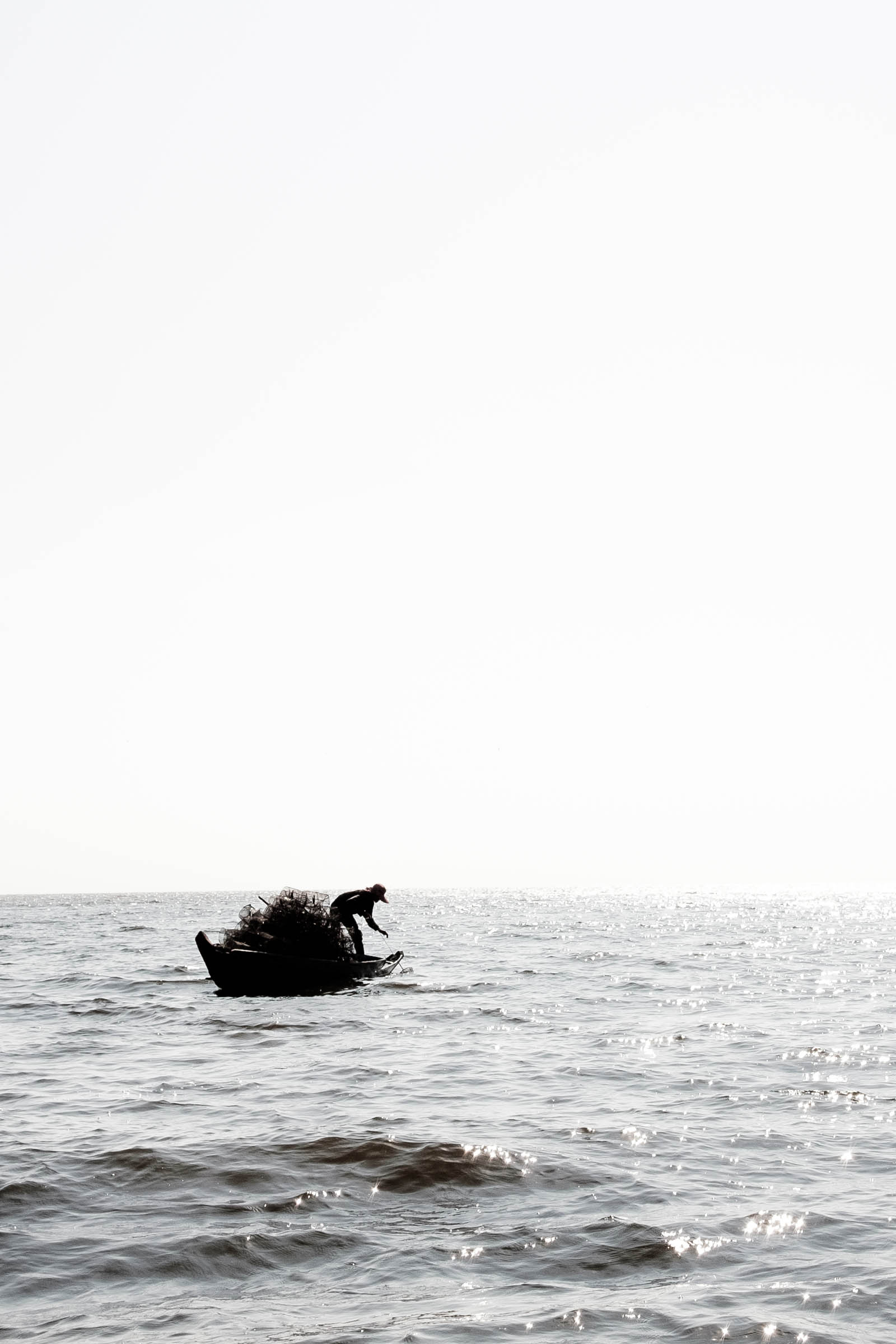Meet Walter, our trusted driver, the guy with the red shirt, who took us around during the days we spent in and around Siem Reap. This is during our early morning trip on our way to the Great Tonle Sap Lake, and the floating village of Kampong Phluk.
The coconut and banana shop also sells this. No alcohol though: it’s fuel!
We paid a few dollars for a boat ride toward the watery village, and beyond, to a flooded forest. The trip is an adventure in itself!
 All houses are built on large stilts, and while we arrived just after the rainy season, we concluded that the water could still rise another 5 meters before the villagers get wet feet.
All houses are built on large stilts, and while we arrived just after the rainy season, we concluded that the water could still rise another 5 meters before the villagers get wet feet.
In this photo, two people bring in a net from the boat (at left), and in a netted cage the small fish are beaten out of the net by a device made of bicycle wheels and sticks.
Behind the village we arrived in the flooded forest, where a group of ladies, each of them in her own colourful boat, were already waiting for the first guests of the day.
This is a community-based tourism project, providing an income to the local population. Most of these women are married to a fisherman.
Our lady captain peddled us through the surreal environment.
The forest is at the edge of the big lake. These poles are the remnants of an old jetty or walking bridge from the village to the lake.
 Birds waiting patiently for more forest dwellers.
Birds waiting patiently for more forest dwellers.
 Our peddling lady dropped us at a floating restaurant, where the Chinese owner was just finishing her morning prayers.
Our peddling lady dropped us at a floating restaurant, where the Chinese owner was just finishing her morning prayers.
Before returning to Walter and our Tuktuk, we visited the actual Tonle Sap lake (Khmer: ទន្លេសាប IPA: [tunleː saːp], literally large river (tonle); fresh, not salty (sap), commonly translated to ‘great lake’).
(From Wikipedia:) – As one of the world’s most varied and productive ecosystems the region has always been of central importance for Cambodia’s food supply. It proved capable of largely maintaining the Angkorean civilization, the largest pre-industrial settlement complex in world history. Directly and indirectly it affects the livelihood of large numbers of a predominantly rural population. Due to ineffective administration and widespread indifference towards environmental issues, the lake and its surrounding ecosystem is coming under increasing pressure from over-exploitation and habitat degradation, fragmentation, and loss. All Mekong riparian states have either announced or already implemented plans to increasingly exploit the river’s hydroelectric potential. A succession of international facilities that dam the river’s mainstream is likely to be the gravest danger yet for the entire Tonle Sap eco-region. The largest freshwater lake in Southeast Asia, that contains an exceptional large variety of interconnected eco-regions with a high degree of biodiversity is a biodiversity hotspot and was designated as a UNESCO biosphere reserve in 1997.
Tonle Sap fisher
A fisher and his assistant returning home from a night’s work.
And finally our boat took us back to the shore.
(Camera: Fujifilm X100F, some of the photos with WCL X100ii wide-angle converter)






















Great as always